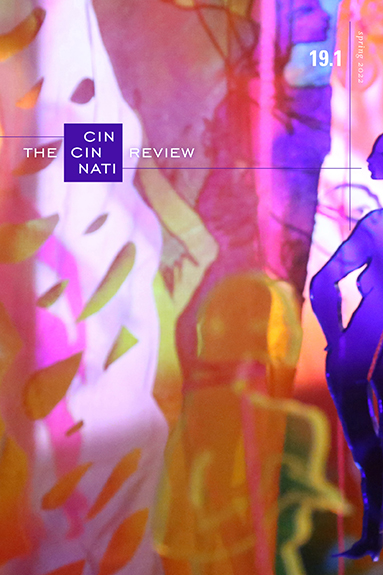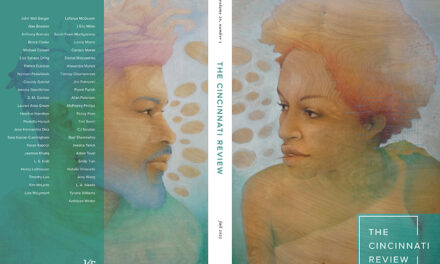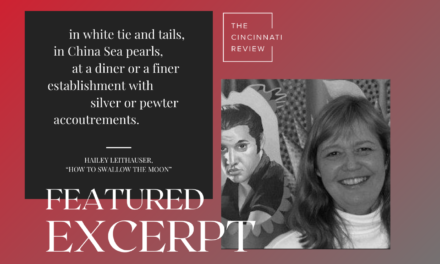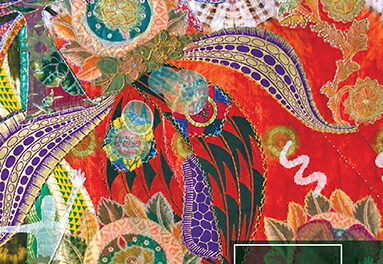We are pleased to share this craft essay by Frankie Y. Bailey on writing crime fiction, which appeared in Issue 19.1 as part of a special multigenre review and essay feature on the ethics and craft of crime writing (read the entire feature here):
As a PhD in criminal justice, I do qualitative research focusing on narratives about crime and justice in a variety of sources, including books, movies, television shows, newspaper articles, and trial transcripts. As a senior in college, I did an independent study on “bystander intervention,” reviewing the sociological research on why the witnesses to a crime in progress might fail to take action. My interest in the topic had been inspired by the 1964 Kitty Genovese case in Queens, New York. Ms. Genovese was returning home from work when she was attacked. Thirty-eight of her neighbors were alleged to have heard her screams, looked out, failed to call the police, and left her to be stalked and killed. This story of thirty-eight people who did nothing to help her shocked the nation.
Except it didn’t happen quite that way. As journalist David W. Dunlap reported in an April 2016 retrospective in the New York Times, the problem with the front-page article about the crime and with a later book by A. M. Rosenthal (Thirty-Eight Witnesses) “was that some key facts were wrong, or at least subject to much different interpretation.” Genovese was attacked twice, not three times; at least two witnesses did call the crime in, and only about “half a dozen” people could have seen what happened.
This correction came long after I had completed my undergraduate independent study and been encouraged to apply to the graduate program in the School of Criminal Justice at the State University of New York (now the University at Albany). The case still intrigues me because my areas of research are crime history and crime in mass media/popular culture. I’m also a mystery writer. In both real life and fiction, the context of crimes matters. Kitty Genovese was viewed as the victim not only of a vicious killer but of her uncaring neighbors. In the anonymity of a big city, her screams were said to have brought no one to her aid because of the “diffusion of responsibility” among the witnesses who had assumed someone else would do something. Their reluctance to get involved was attributed to the anonymity of urban life, in contrast to small towns where people still looked out for each other. In fact, the relationship between crime and setting isn’t quite as simple as it first appears; nonviolent property offenses, murders, and everything in between reflect the complex intersection of factors such as race/ethnicity, class, gender, sexuality, and age.
Where Crime Happens
As social scientists, criminologists collect and analyze data about the environment or “social location” in which crimes occur. Although murder is the focus of television crime dramas, movies, novels, and podcasts, it is also an atypical crime. In real life, even when the crime rate is increasing, homicides are far fewer in number than other violent offenses. Most aggravated assaults do not end in the death of the victim. Even when the victim is killed, the crime is more likely to be manslaughter than carefully plotted, premeditated murder. But, yes, knowing what readers of crime fiction expect in a good story, I too write books featuring sleuths who match wits with clever killers.
At the same time, I weave as much history into my storytelling as I can. I write looking back at the past, particularly at the parallel evolution of criminal justice and mass media. In the nineteenth and early twentieth centuries, as new waves of European immigrants arrived in the United States and settled in overcrowded neighborhoods, reformers attributed their crime rates to poverty or their alleged propensity toward violent behavior, sometimes both. The migrants and immigrants of color who took their place (“ethnic succession”) in similar urban neighborhoods found themselves restricted in both their physical mobility and economic opportunities. In the 1970s and after, as factories and mills closed down or moved to Sunbelt cities, people of color found it difficult to escape these “ghettos” (later known as inner cities). The jobs that they had only recently acquired were disappearing, and they were being left behind in declining neighborhoods.
Social scientists now recognize the importance of both race and class in entrenched urban poverty. Urban neighborhoods, with higher concentrations of Black or Latinx residents, tend to have both higher rates of poverty and higher rates of crime. But these are also neighborhoods with few employment opportunities, inadequate schools, and more police surveillance and arrests. As crime-fiction writer Raymond Chandler had his hard-boiled detective observe in the 1930s and as the real-life Kerner Commission found in the 1960s, news agencies have never considered violent crime in poor neighborhoods worth covering in depth. In contrast, white victims of crime receive routine media coverage. Social scientists even have a name for the headline coverage of attractive young white women who disappear: “the missing white-woman syndrome.” Meanwhile, the disappearances of women of color go unreported and so do their violent deaths.
Media coverage of the deaths of white victims contributes to the fear of crime among white consumers of news and of fictionalized narratives about crime. Since people tend to read or watch only news and entertainment media that reflect their beliefs, their biases receive reinforcement. And when offenders are white—even serial killers and mass murderers—the coverage often includes interviews with psychologists and other experts about the reason for the crimes. This search for explanations, such as trauma from an abusive childhood, is rarely deemed necessary for offenders of color.
As a criminologist I know all this. I have coedited reference books on media coverage of true-crime cases. I have written about the intersections of race/ethnicity, class, and gender, and on related stereotypes about crime. I write crime fiction because I want to engage in discussion with nonacademics about where crime happens and to whom, and I want to deal with social issues. The protagonist in my Lizzie Stuart series is a Southern criminal justice professor/crime historian who is now the director of an institute for the study of Southern crime and culture, and I sometimes take readers into the classroom or the institute. I draw on real-life cases for the novels and short stories featuring Lizzie and my other two protagonists, Albany police detective Hannah McCabe and former World War II army nurse Jo Radcliffe. For example, the second Lizzie Stuart mystery, A Dead Man’s Honor, was inspired by an atypical lynching that I discovered during my dissertation research on crime and justice in the early twentieth century in my hometown, Danville, Virginia. Old Murders, the third book in the Lizzie Stuart series, was inspired by my research on the execution of a young African American woman who had killed the white woman on whose farm her family sharecropped, during a physical altercation between the two.
Academic research on crime is often neglected as a source by crime-fiction writers. But such research has value because scholars aim to provide factual, rather than sensational, accounts of crime. Journal articles and books by criminologists and crime historians are worth reading both for the quantitative findings on the social location of crimes and for the qualitative narratives based on archival research, oral histories, and field research. Beginning in the 1970s, in the wake of the women’s movement and the Civil Rights Movement, more women and people of color entered academic programs in criminology and criminal justice. They have focused on aspects of gender and race/ethnicity often neglected by previous white male scholars, including attention to the social locations of crime and the lived experiences of both victims and offenders. The findings of their research have provided context for the Me Too and Black Lives Matter movements.
Setting in Storytelling
In Fast Fiction (2014), her guide to writing the first draft of a novel, Denise Jaden suggests writers ask themselves, “Are there ways you can increase the opportunity for conflict in the way you build your world?” Writers want conflict because without it, they have no story to tell. But crime writers are also faced with a dilemma: how should they treat fictional conflict when there is so much of it in the real world?
In fact, settings—in both real life and crime fiction—can limit the presence of some types of characters or otherwise shape the narrative. A Black man in a white neighborhood in the 1940s is as “out of place” as a white man who walks into a bar in a Black neighborhood. Walter Mosley’s Devil in a Blue Dress (1990) opens this way: “I was surprised to see a white man walk into Joppy’s bar. It’s not just that he was white but he wore an off-white linen suit and shirt with a Panama straw hat and bone shoes over flashing white silk socks. His skin was smooth and pale with just a few freckles. One lick of strawberry-blond hair escaped the band of his hat. He stopped in the doorway, filling it with his large frame, and surveyed the room with pale eyes; not a color I’d ever seen in a man’s eyes.” Easy Rawlins, the speaker, feels “a thrill of fear,” but it goes away quickly because it is 1948. He has been overseas, he has fought in a war, and he is “used to white people” now.
What is striking about Easy’s response to this man is that Easy is the person who is narrating the story. The white male character has come to the bar to meet him because he needs someone to look for a missing white woman in places that he cannot go, where he would not be able to get answers to his questions. A Black man is both the narrator of the story and the one who can solve its mystery. But at the same time, Easy is still, in this first novel in the series, unable to move with ease in the city of Los Angeles. He has bought a home that he treasures in Watts, but he has lost his job in a factory. And even though he no longer fears white people—or says he doesn’t—he still lives in a segregated world in which he must be wary of the white men he encounters.
In my first novel, Death’s Favorite Child, Lizzie joins her best friend, Tess Alvarez, a travel writer, for a vacation in Cornwall. Although there is no evident prejudice among the guests at the bed-and-breakfast where they spend the week, Lizzie notices—as I did when a friend and I spent a week in St. Ives, the “British Riviera” artist colony that inspired my “St. Regis”—there are few vacationers of color. Lizzie’s awareness of her own visibility gives her more empathy for the lesbian artist who is a suspect in the murder of the hotel owners’ niece.
Crime and Context
In cozies, police procedurals, legal thrillers, or historical novels, the settings writers use are important. Vividly realized settings allow both characters and readers to be anchored in time and place, but writers have to keep in mind that settings are not neutral in their impact. Feminist scholars and scholars of color have been in the forefront in calling attention to the effects of implicit bias, misogyny, and racism in the lives of women and girls, and people of color. No setting is neutral for those who are marginalized. The standpoints of these characters in our crime fiction, how they view the world, are an aspect of storytelling that deserves attention. Although white female writers have made significant publishing strides, it is only in the past decade that a critical mass of writers of color have been begun to tell the stories of those otherwise unacknowledged in books and other crime media. Arguably, some of the best contemporary crime fiction happens when writers locate their characters in settings that are true to life and tackle social issues and the complexities of modern life.
Frankie Y. Bailey is a professor in the School of Criminal Justice, University at Albany (SUNY), and a mystery writer. She has received the George M. Dove award for crime-fiction research. Nominated for Edgar, Agatha, and Anthony awards, she received a Macavity Award for African American Mystery Writers.










